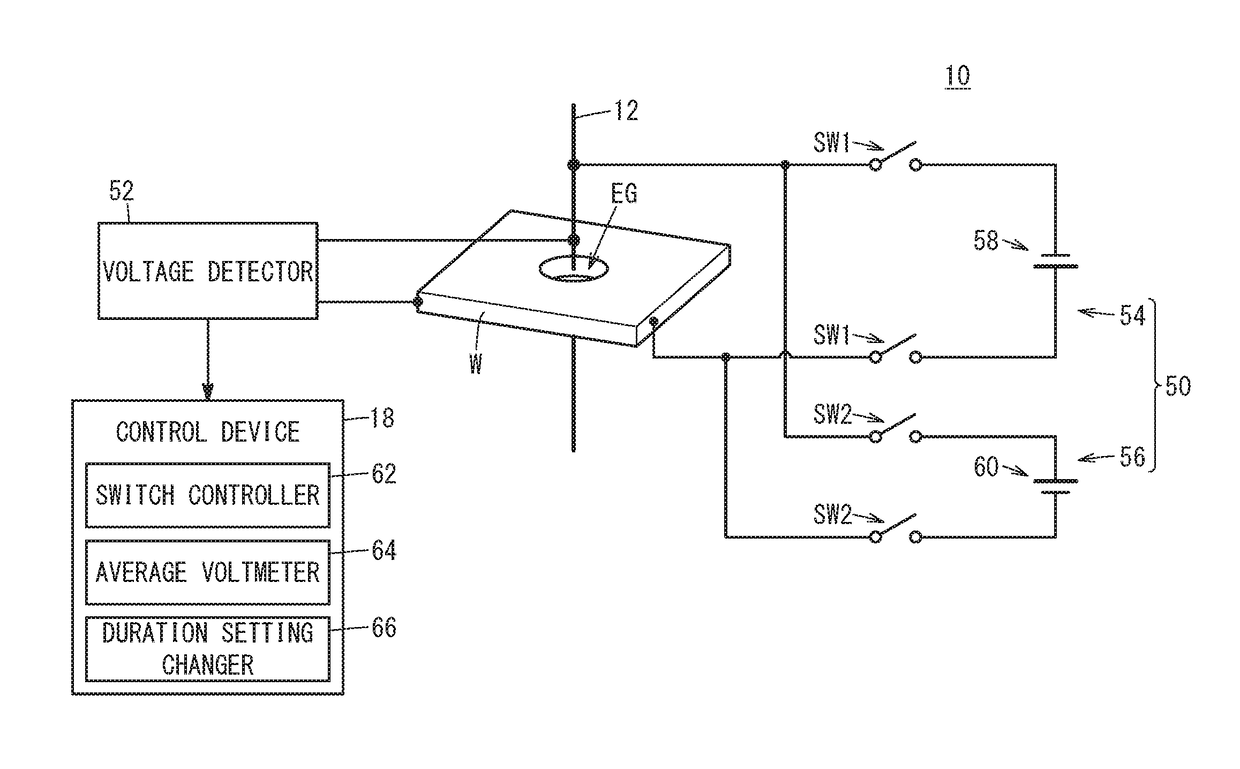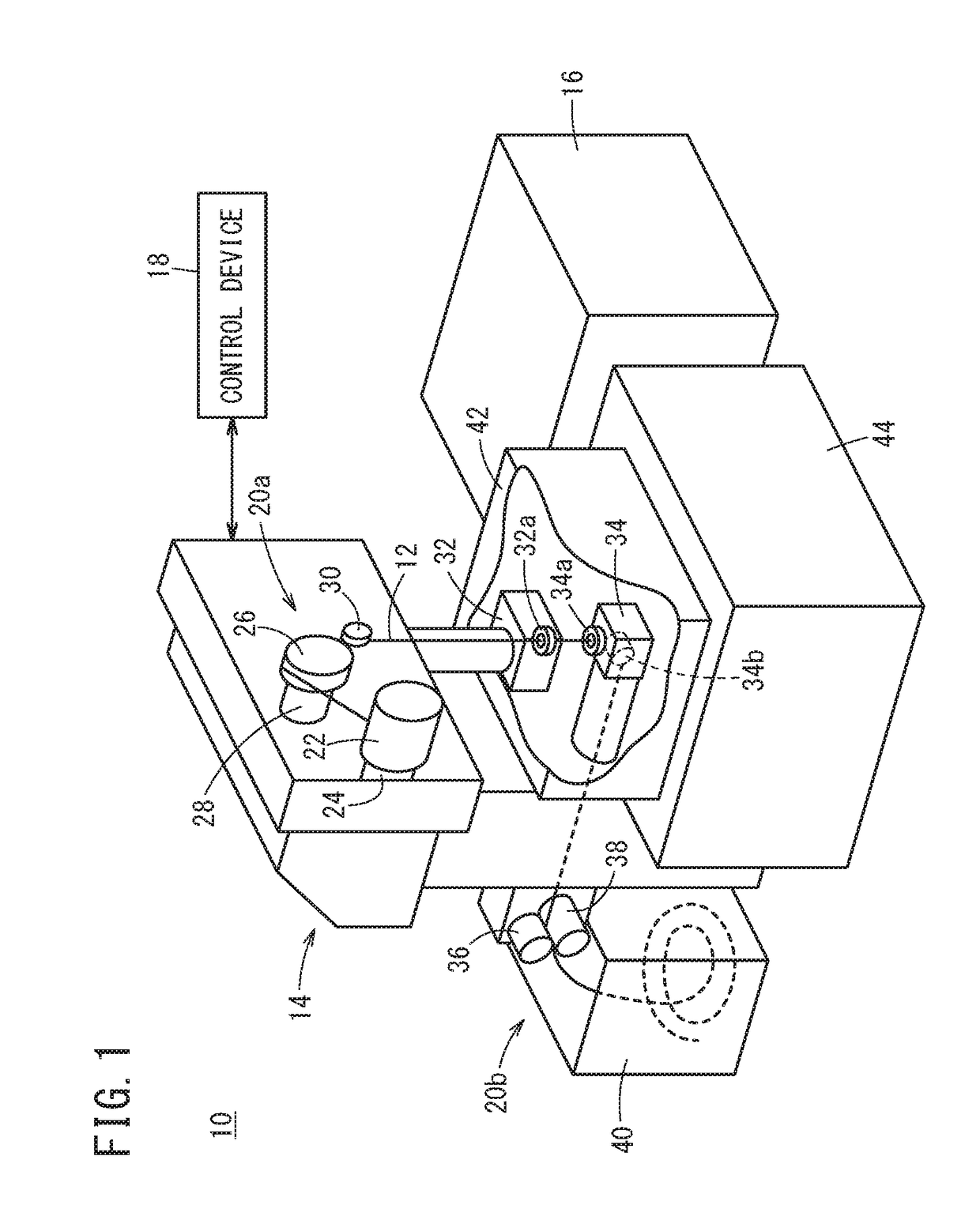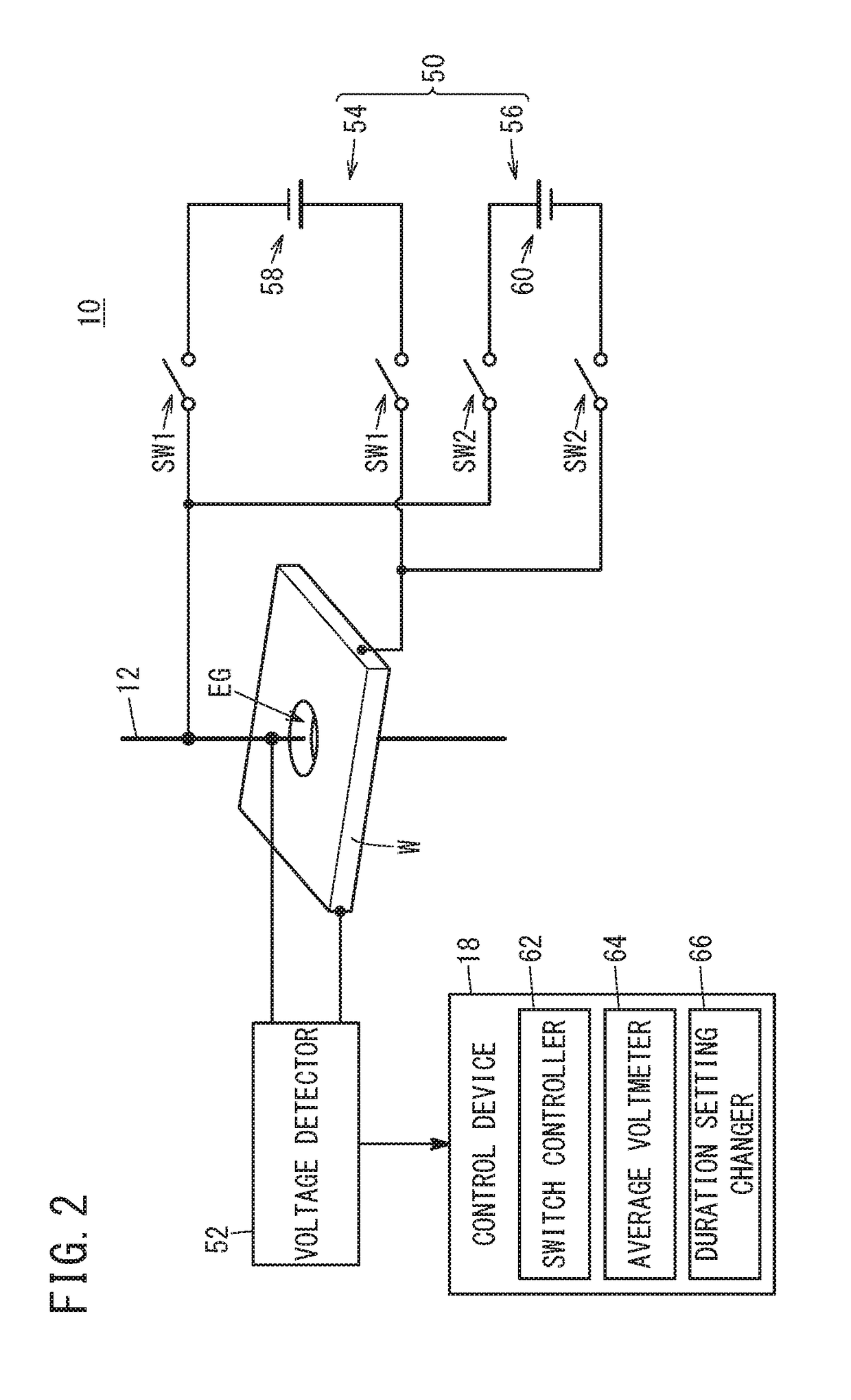Wire electrical discharge machine
- Summary
- Abstract
- Description
- Claims
- Application Information
AI Technical Summary
Benefits of technology
Problems solved by technology
Method used
Image
Examples
##al example
VARIATIONAL EXAMPLE
[0085]The above embodiment may be modified as follows.
##al example 1
Variational Example 1
[0086]FIG. 9 is an electrical circuit configuration diagram of the wire electrical discharge machine 10 in a variational example 1. The same components as those in the above embodiment are allotted with the same reference numerals, and only different components will be described.
[0087]In the variational example 1, the second voltage applying circuit 56 for applying reverse polarity voltage to the electrode gap EG further includes current limiting resistors R2 inserted between the second DC power source 60 and the electrode gap EG. Specifically, each of the current limiting resistors R2 is inserted between the second switch SW2 and the electrode gap EG. That is, one current limiting resistor R2 is inserted between the second switch SW2 connected to the positive electrode of the second DC power source 60 and the wire electrode 12, and the other between the second switch SW2 connected to the negative electrode of the second DC power source 60 and the workpiece W.
[0...
##al example 2
Variational Example 2
[0091]FIG. 10 is an electrical circuit configuration diagram of the wire electrical discharge machine 10 in a variational example 2. The same components as those in the above embodiment are allotted with the same reference numerals, and only different components will be described.
[0092]In the variational example 2, the first voltage applying circuit 54 that applies positive voltage across the electrode gap EG further includes a first capacitor C1 connected in parallel with the first DC power source 58. The second voltage applying circuit 56 that applies reverse polarity voltage across the electrode gap EG further includes a second capacitor C2 connected in parallel with the second DC power source 60. Specifically, the first capacitor C1 is provided between the first switches SW1 and the first DC power source 58, and the second capacitor C2 is provided between the second switches SW2 and the second DC power source 60. Since the first switches SW1 and the first DC...
PUM
| Property | Measurement | Unit |
|---|---|---|
| Time | aaaaa | aaaaa |
| Polarity | aaaaa | aaaaa |
| Electric potential / voltage | aaaaa | aaaaa |
Abstract
Description
Claims
Application Information
 Login to View More
Login to View More - R&D
- Intellectual Property
- Life Sciences
- Materials
- Tech Scout
- Unparalleled Data Quality
- Higher Quality Content
- 60% Fewer Hallucinations
Browse by: Latest US Patents, China's latest patents, Technical Efficacy Thesaurus, Application Domain, Technology Topic, Popular Technical Reports.
© 2025 PatSnap. All rights reserved.Legal|Privacy policy|Modern Slavery Act Transparency Statement|Sitemap|About US| Contact US: help@patsnap.com



